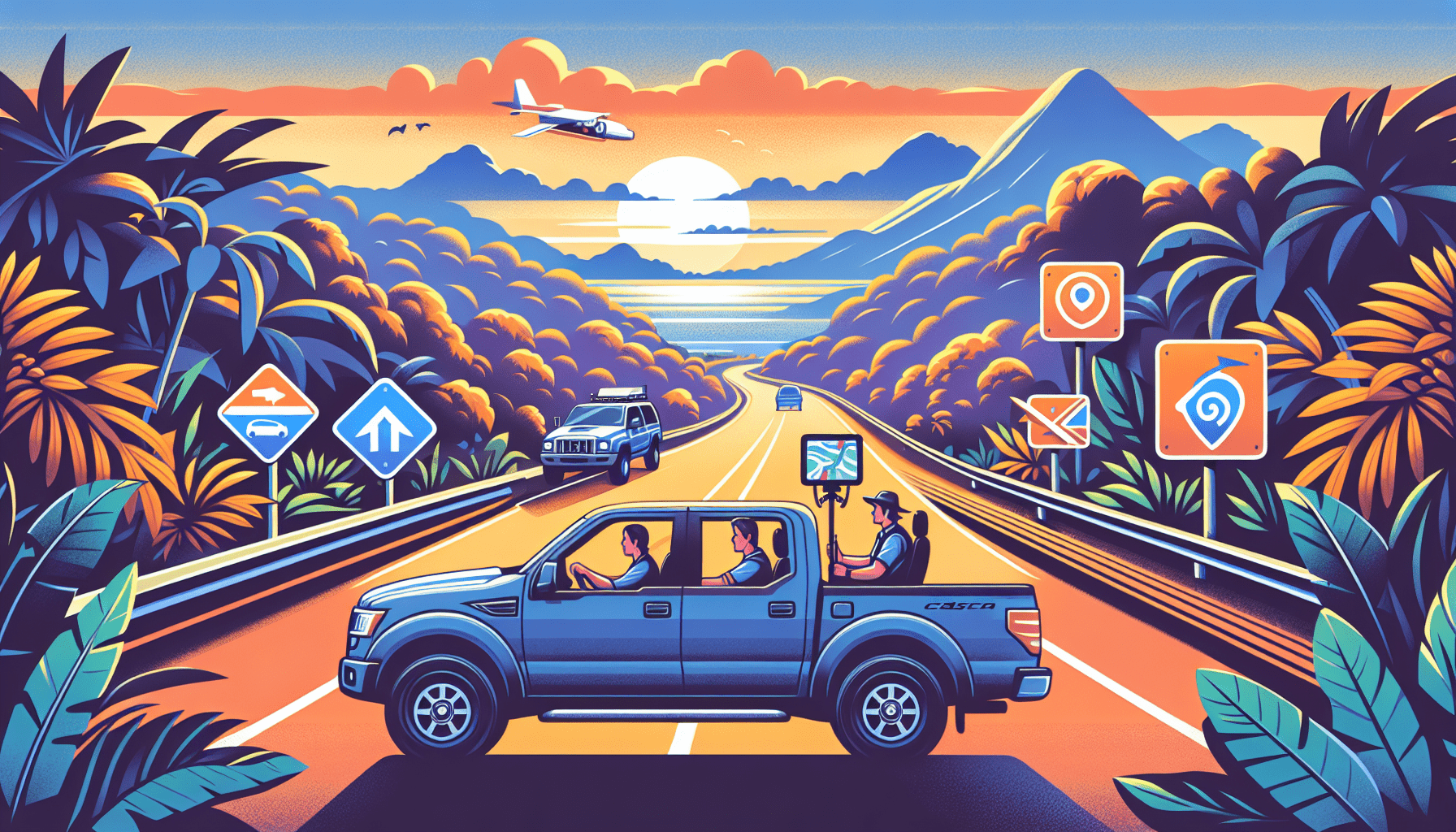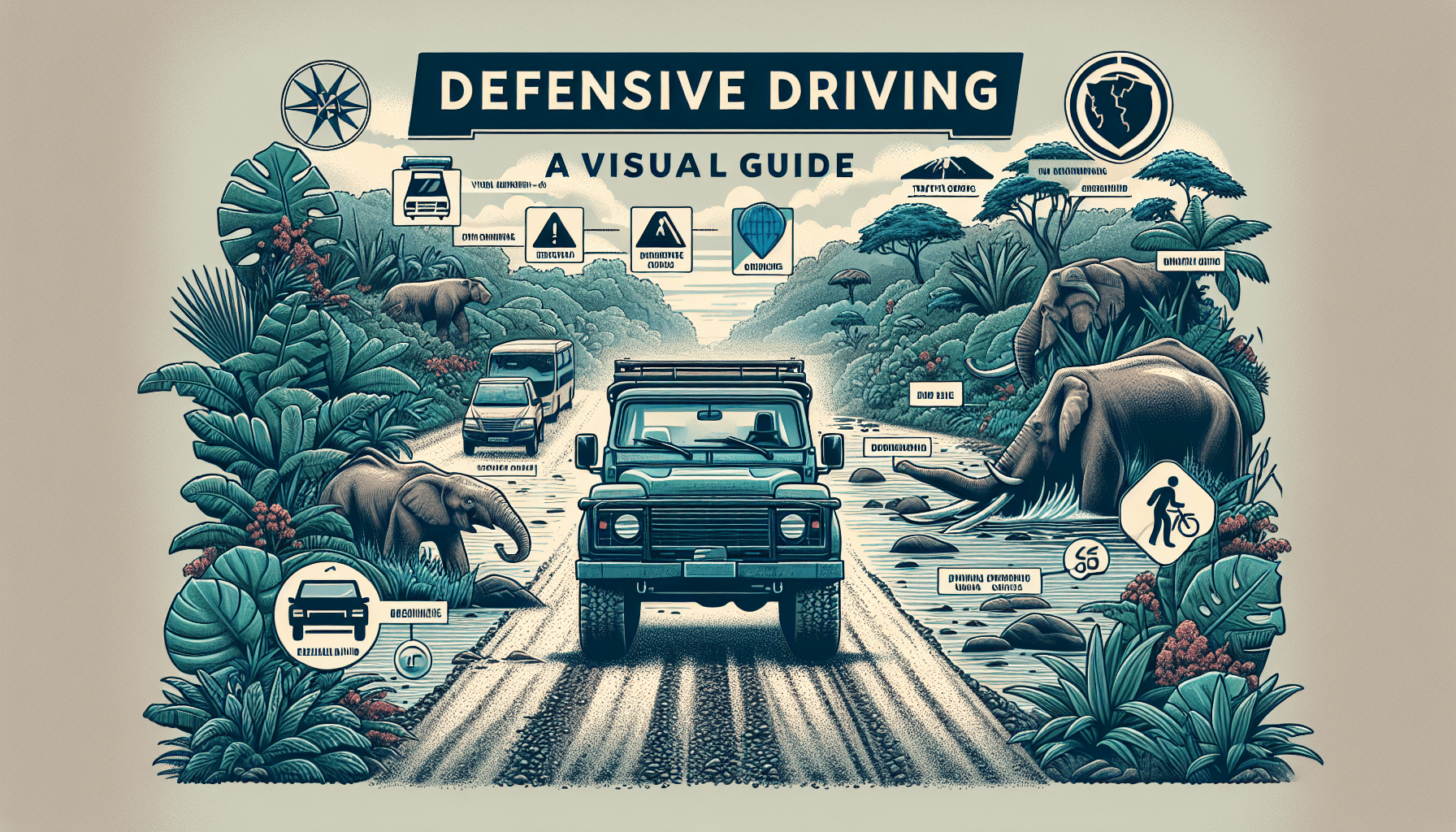travel inspira Luggage Scale, Portable Digital Hanging Baggage Scale for Travel, Suitcase Weight Scale with Rubber Paint, 110 Pounds, Battery Included
$9.99 (as of November 20, 2024 15:23 GMT +00:00 - More infoProduct prices and availability are accurate as of the date/time indicated and are subject to change. Any price and availability information displayed on [relevant Amazon Site(s), as applicable] at the time of purchase will apply to the purchase of this product.)Ready for an epic road trip driving in Costa Rica? renting a car is the best way to experience this beautiful country. But before you hit the road, there are a few things you should know. Costa Rica is known for its mountainous terrain, winding dirt roads, and occasional river crossings, which can make driving a thrilling adventure. In this article, you will find important tips for driving in Costa Rica, from renting a car to navigating the roads and dealing with local drivers. So get ready to explore the “Rich Coast” on a vacation you’ll never forget.
Book an All-Inclusive Vacation
Should You Drive In Costa Rica?
If you love the freedom and adventure of independent travel, then renting a car and self-driving in Costa Rica is the best way to explore the country. While there are public bus options available, they are limited and can be time-consuming. By renting a car, you have the flexibility to stop at any cool spot you come across, whether it’s a waterfall, volcano, beach, or national park. Plus, having a car allows you to store your belongings in the trunk, making it easier to move around and explore different towns with just a small travel backpack. However, it’s important to note that some of the roads in Costa Rica can be rough and muddy, and local drivers may not always follow the rules. With some practice and confidence, driving in Costa Rica can be a rewarding experience.
Advantages of Driving in Costa Rica
One of the biggest advantages of driving in Costa Rica is the freedom and flexibility it provides. You can create your own itinerary and explore at your own pace, without being tied to a tour group or bus schedule. Driving also allows you to reach off-the-beaten-path destinations that may not be easily accessible by public transportation. Additionally, having a car gives you the convenience of storing your belongings safely and securely, allowing you to travel light with just a small travel backpack.
Disadvantages of Driving in Costa Rica
While there are many advantages to driving in Costa Rica, there are also some disadvantages to consider. The road conditions in certain areas can be rough and challenging, especially in rural or remote locations. Some of the back roads are unpaved and can be muddy or filled with potholes. It’s important to have a vehicle that can handle these conditions, such as a four-wheel drive SUV. Additionally, local drivers in Costa Rica may not always follow traffic laws, so you should be cautious and aware while driving.

Where To Rent Your Car In Costa Rica
When it comes to renting a car in Costa Rica, there are several popular car rental companies to choose from. Some of the well-known companies include Enterprise, Sixt, Hertz, and a local company called Adobe Rent-a-Car. However, the best website to book your car in Costa Rica is Discover Cars. Discover Cars searches both local and international car rental companies, ensuring that you find the best possible price for your rental. This website is the easiest and most convenient way to rent a car in Costa Rica. Depending on your travel plans, you can pick up your car from San Jose Airport or Liberia Airport.
Tips for Picking Up and Returning Your Rental Car
When picking up your rental car in Costa Rica, it’s important to plan ahead and allocate enough time for the process. If you’re picking up your car from San Jose Airport, plan to do so about 60 minutes after your flight arrives. This will give you time to go through airport procedures and make your way to the car rental area. Likewise, if you’re picking up your car from Liberia Airport, plan to do so about 30 minutes after your flight arrives. When returning your rental car, be sure to factor in extra time to drop off the car and catch a shuttle back to the airport. It’s recommended to be at the airport at least 3 1/2 hours before your departure time to allow for any unforeseen delays.
Car Rental Insurance In Costa Rica
Getting full insurance coverage for your rental car in Costa Rica is of utmost importance. While rental cars in Costa Rica typically come with a basic Collision Damage Waiver (CDW), this coverage is limited and may not include damage to tires, cracked windshields, or undercarriage. It’s crucial to check the details of your CDW and understand what it covers. To ensure full coverage and peace of mind, it’s recommended to pre-book full insurance coverage online. This is usually cheaper than purchasing insurance at the rental counter and eliminates the risk of your credit card coverage not being applicable in Costa Rica. Many travel credit cards also offer car rental insurance, but it’s essential to read the fine print and confirm coverage in Costa Rica.

Importance of Getting Full Insurance Coverage
As mentioned earlier, getting full insurance coverage for your rental car in Costa Rica is highly recommended. The roads in certain areas can be rough, and some drivers may not follow traffic laws. Having full insurance coverage will protect you in case of any accidents, damage, or theft of the rental car. Without full coverage, you may be held liable for the cost of repairs or replacement, which can be expensive. It’s always better to be safe than sorry, so invest in full insurance coverage to avoid any potential financial burden or stress during your trip.
What is Included in Basic Collision Damage Waiver (CDW)
A basic Collision Damage Waiver (CDW) is typically included with rental cars in Costa Rica. CDW covers the car for up to a certain amount of damage, usually between $1000-3000 USD. However, it’s important to note that CDW may not cover damage to tires, cracked windshields, or the undercarriage of the car. The amount covered by CDW is held on your credit card as a deposit until you return the car in good condition. To ensure you have full coverage and protection, it’s recommended to opt for additional insurance or pre-book full insurance coverage online.
Travel Credit Cards That Offer Car Rental Insurance
If you’re a frequent traveler, you may already have a travel credit card that offers car rental insurance. However, it’s crucial to read the fine print and confirm coverage in Costa Rica. Many people mistakenly assume that their credit card coverage automatically applies in all countries, but this may not be the case. Costa Rica may have specific requirements or restrictions, so it’s important to review all terms and conditions related to car rental insurance. If your credit card does provide coverage in Costa Rica, it can be a cost-effective option as you won’t need to purchase additional insurance.
How Much Does It Cost To Rent A Car In Costa Rica?
The cost of renting a car in Costa Rica varies depending on several factors, such as the type of car, the rental company, and the duration of your rental. On average, renting a car in Costa Rica will cost you around $25-$40 USD per day. A 4-door sedan is typically on the lower end of the price range, while a four-wheel drive SUV can cost more, ranging from $40-$70 USD per day. If you’re looking for a unique experience, you can also rent a 4X4 campervan or truck with a tent attached, but this option will be more expensive, costing over $100 USD per day. Additionally, there may be additional fees for one-way rentals, where you drop off the car in a different city than where you picked it up.
Prices for Different Types of Vehicles
The rental prices for different types of vehicles in Costa Rica can vary. As mentioned earlier, a 4-door sedan is typically the most affordable option, costing around $25 per day. This type of car is suitable for most paved roads and is perfect for solo travelers or couples. If you’re planning to venture off the beaten path or explore more remote areas, a four-wheel drive SUV is recommended. The cost of a four-wheel drive SUV ranges from $40-$70 USD per day. This type of vehicle provides better traction and stability on unpaved or rough roads. Finally, if you’re seeking a unique and adventurous experience, you can consider renting a 4X4 campervan or a truck with a tent attached. These options are more expensive, costing over $100 USD per day, but they offer the added convenience of accommodation on wheels.
Additional Fees and Considerations
When renting a car in Costa Rica, there may be additional fees and considerations to keep in mind. One common additional fee is for drivers under the age of 25. Rental companies often charge an extra fee (usually around $10 per day) for drivers in this age group. It’s important to check the age requirements and any associated fees before booking your rental car. Additionally, fuel costs should be considered when budgeting for your trip. Gas prices in Costa Rica are higher compared to countries like the United States, with the current cost being around $4.75 USD per gallon for gasoline and $4.20 per gallon for diesel. Finally, it’s crucial to familiarize yourself with local driving laws, speed limits, and road signs before driving in Costa Rica to ensure a safe and enjoyable experience.
Minimum Age for Renting a Car in Costa Rica
The minimum age for renting a car in Costa Rica can vary depending on the rental company you choose. Typically, the minimum age requirement ranges from 21-25 years old. It’s important to check the age requirements of the specific rental company you plan to book with, as some may have additional restrictions or fees for younger drivers. If you are under the age of 25, you may be subject to an extra fee (usually around $10 per day) on top of the regular rental rate. Be sure to factor in any age-related fees when budgeting for your rental car in Costa Rica.
Additional Fees for Young Drivers
Young drivers in Costa Rica, typically those under the age of 25, may incur additional fees when renting a car. Rental companies often charge an extra fee for younger drivers due to the perceived higher risk associated with their age group. This fee is usually around $10 per day and is in addition to the regular rental rate. It’s important to consider these additional fees when budgeting for your rental car in Costa Rica. Be sure to check the age requirements and associated fees of the rental company you plan to book with to avoid any surprises or unexpected expenses.
Things To Remember While Driving in Costa Rica
Driving in Costa Rica can be a thrilling and rewarding experience, but it’s important to be aware of local driving laws and habits. While driving laws in Costa Rica are similar to those in other countries, it’s worth noting that some local drivers may not always follow them. For example, turn signals may not be used, and drivers may run red lights if they believe they can get away with it. As a driver in Costa Rica, it’s essential to stay alert and cautious at all times.
Speed limits in Costa Rica are quoted in kilometers per hour. On most highways, the maximum speed limit is 120 km/h (approximately 74 miles per hour). On secondary roads, the limit is usually 60 km/h (about 37 miles per hour), and within towns and cities, it is typically 40 km/h (around 25 miles per hour). Be sure to adhere to these speed limits and adjust your driving accordingly.
Understanding road signs in Costa Rica is crucial for safe navigation. Road signs in Costa Rica are similar to those in the United States but are in Spanish. Take some time to familiarize yourself with common Costa Rican road signs before your trip. There are online resources available to help you decipher and understand these signs.
It’s important to note that road conditions in Costa Rica can vary greatly. While the highways are generally paved and in good condition, there are many back roads that are unpaved and may be rough, muddy, or filled with potholes. If you plan on venturing off the beaten path or exploring rural areas, it’s advisable to rent a four-wheel drive SUV. This type of vehicle provides better traction and stability on uneven or challenging terrain. Additionally, some bridges in Costa Rica are only single lane, meaning one car must wait for the other to cross before proceeding.
Finally, if you plan on driving in areas with river crossings, it’s essential to exercise caution and follow the proper techniques. River crossings are more common during the wet season and in certain regions such as the Nicoya Peninsula, Drake Bay, and Osa Peninsula. If you’ve never crossed a river before, it’s recommended to observe and learn from others before attempting it yourself. Make sure your vehicle is in 4X4 mode, drive slowly, and pay attention to the route. Some river crossings may require driving up or downstream before exiting, so be aware of any hidden obstacles or the best entry/exit points.
By keeping these tips and considerations in mind, you can have a safe and enjoyable driving experience in Costa Rica. Remember to stay alert, follow local driving laws, and always prioritize your safety and the safety of others on the road. Enjoy the freedom and adventure that comes with exploring Costa Rica at your own pace.






